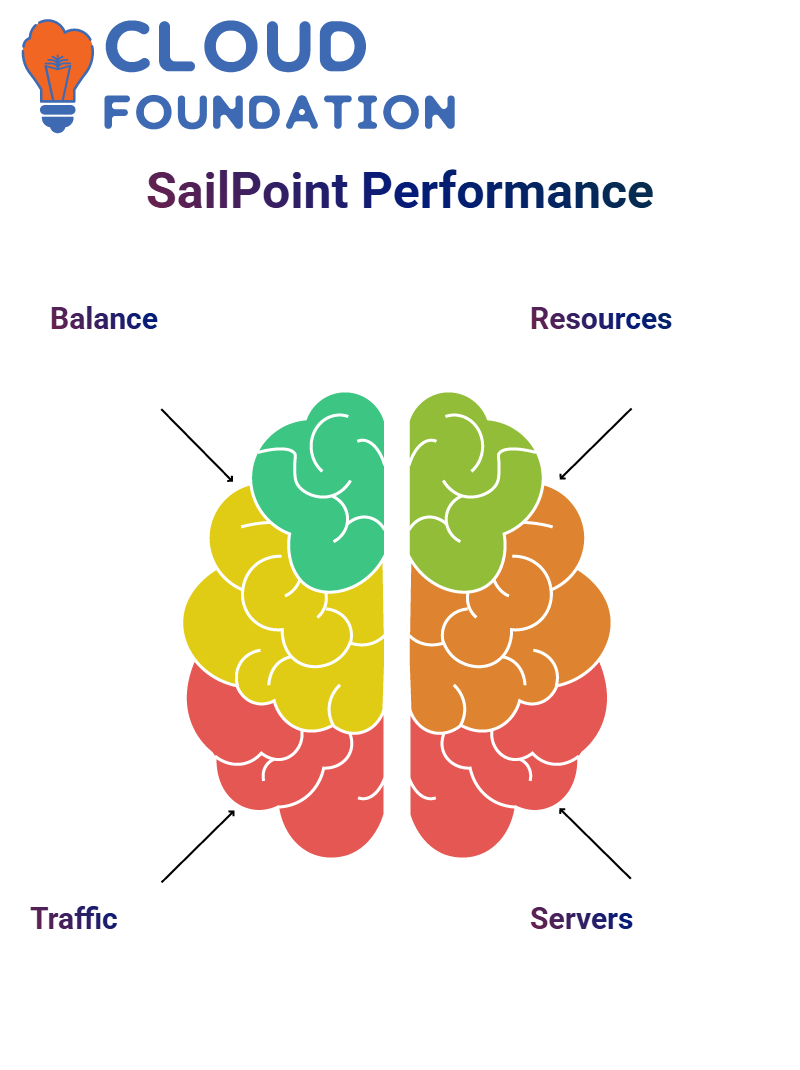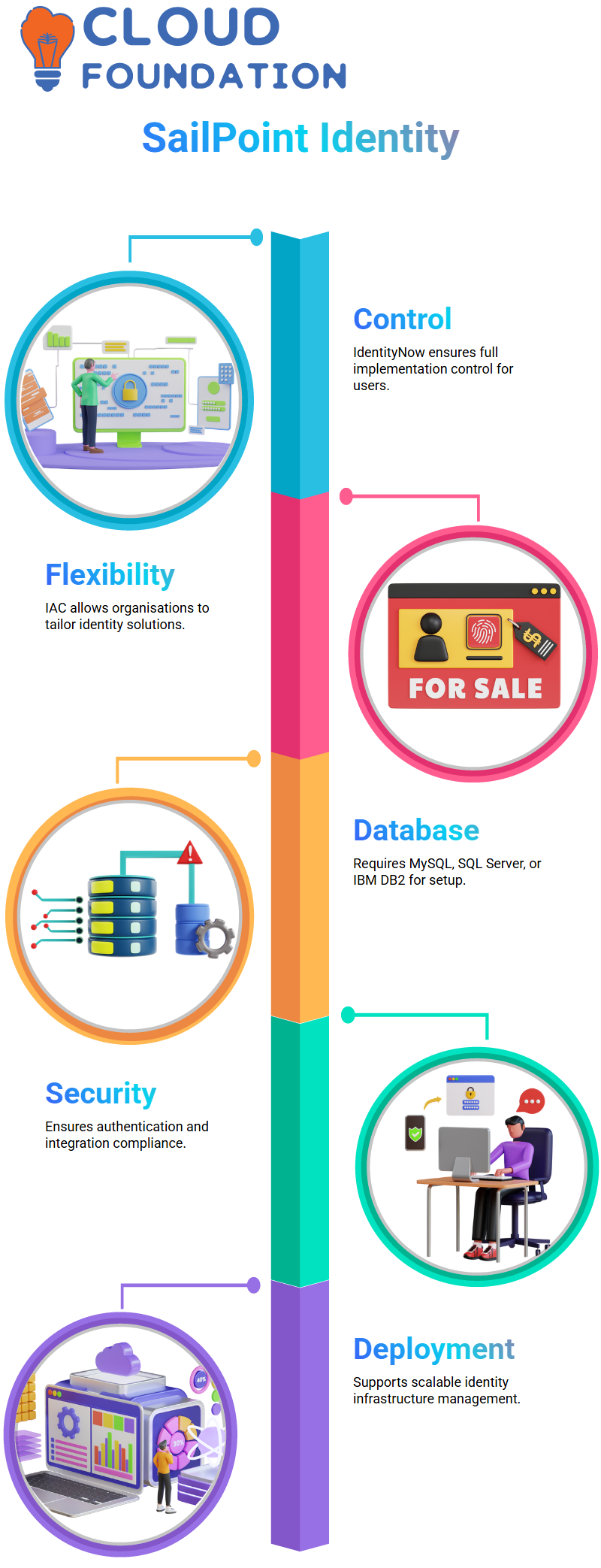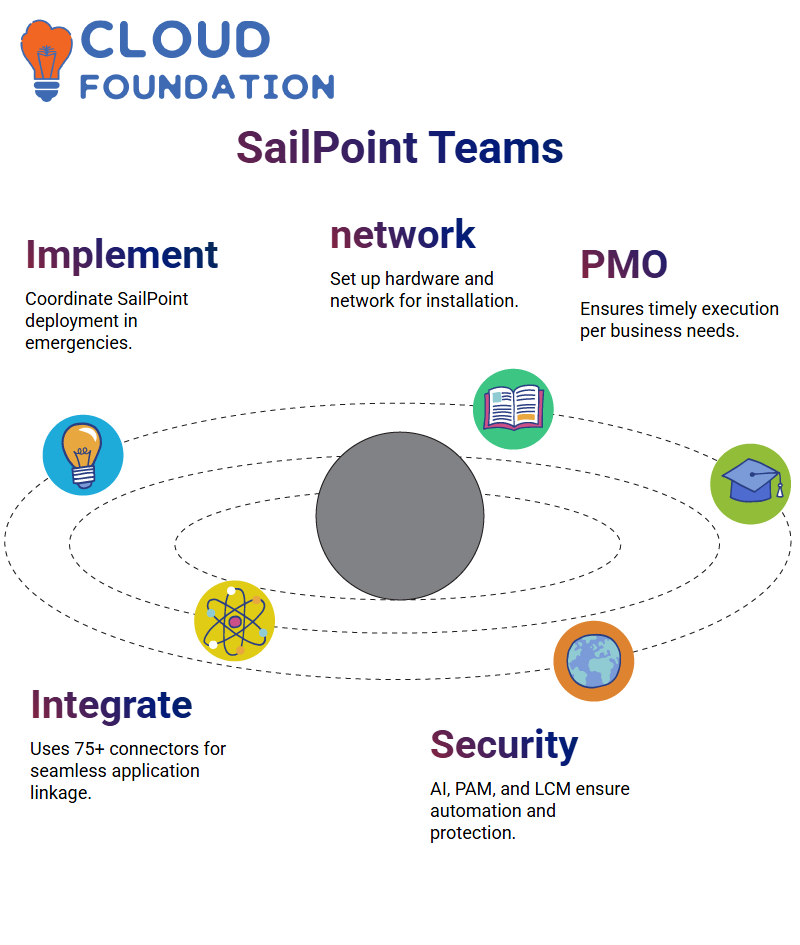SailPoint Identity Management vs SailPoint identity Governance
SailPoint Identity Management
Ever since SailPoint was launched, it has been the most suitable choice for organisations in need of identity management that is both robust and assured.
In my opinion, it presents a very organised and flexible approach that caters to the needs of both small and large enterprises.
Since the advent of identity management solutions, organisations have been known to compare SailPoint’s IAC and IdentityNow.
Provided that the decision to opt for an unambiguous solution depends on the conditions, infrastructure, and whether or not to be in the cloud, or on-premises.

SailPoint Identity Governance
Identity governance and conformity are essential components of identity management, and SailPoint is far ahead of the curve in this area.
It provides numerous reporting and analytics tools that can help organisations achieve compliance across all events.
SailPoint supplies more than 70 ready-made reports that enable users to trace and audit activities with ease.
The procedure and rule implementation capacity, in addition to out-of-the-box reports, can be used to adjust security policies.
SailPoint Load Balancing
For SailPoint performance to be sky-high, the most important thing is having the right resources. Proper load balancing is the key to high performance in SailPoint.
If the system has one server working at 80% and another at 45%, load balancers will distribute the load to the less-burdened server, preventing the traffic from becoming jammed.
This way, the load balancing being done potently permits the system to give excellent performance without interruption.

SailPoint Load Balancing and Traffic Management
SailPoint deploys load balancers to distribute the incoming traffic suitably. Outside load balancers help to distribute UI servers’ requests evenly, ensuring that there is no collapse or locking.
On the backend, SailPoint is also provided with a built-in load balancer that allocates tasks, deciding which tasks should be handled by UI servers or task servers.
For example, lighter operations, which are less time-consuming, will be passed to the UI servers, whereas heavyweight tasks that need more time will be routed to the task servers.
What does SailPoint load balancing mean?
Logging into a system stimulates the server to process the request immediately. Still, what happens if a large number of users attempt to log in simultaneously?
Without proper load balancing, the server may crash under the intensity. SailPoint solves this problem by utilising a load balancer, which verifies that requests are distributed evenly across all servers.
Instead of the traffic being sent to a single server, users attempting to gain access are routed by directing their request through a load balancer URL.
This then determines how to divide the traffic more wisely, ensuring the stability of the application.
SailPoint Application Servers
Configuring SailPoint is a process that begins with selecting the application server as one of the first steps of installation.
Application servers are the lifeblood of any distributed computing system, as they ensure the continuous operation of applications.
I would guess that you are familiar with Apache Tomcat, as it is probably the most preferred server for SailPoint.
Another possible software that can be run for SailPoint is WebLogic; others, such as JBoss and WebSphere, are also good candidates.
It is a widespread practice for SailPoint to be hosted on an Apache Tomcat platform, but given a particular configuration of the system, WebLogic can also be the chosen server.
End users are usually in favour of capitalising on Apache Tomcat because it is very resourceful and reliable.
SailPoint and Operating Systems
One of the OS, such as Windows Server or Linux, can host SailPoint. It depends on the environment.
Can it also be installed on macOS? Absolutely! That said, SailPoint’s setup on a Mac is trickier than on Windows. However, setting up a digital machine can affect the way you install it, but beneficially; thus, you will have no problems in the future.
Is it compatible with macOS? It most certainly will be supported.
Although a small portion of people may experience an issue with installation, they can still move it to VirtualBox, which may be a good solution in cases where problems are present but not major.

SailPoint Software Binary
The heart of the whole SailPoint is the WAR file. In the WAR file, you can find all the imperative application files, e.g., Java classes. The vendor hands this out so that the installers can do.
SailPoint should be run with an application server, such as Apache Tomcat, WebLogic, JBoss, or WebSphere, all of which are widespread types.
An additional requirement is a database server, as well as a Java runtime and development environment.
SailPoint Infrastructure Planning
The work of gathering the infrastructure specifications needs to be done before deploying SailPoint, as SailPoint gives different footprints based on the organisation’s needs.
The footprints begin with Micro, followed by Small, Medium, Large, and end with Colossal.
It would be best if small setups (less than 5,000 objects) went with a Micro footprint. This choice will result in different hardware specifications based on the footprint, ensuring optimal performance.

SailPoint Resources
If someone belongs to an organisation like Accenture, they can access SailPoint’s Commerce Community Portal by taking advantage of their business email.
This provides you with all the necessary documents to access, including hardware topology leaders and sizing recommendations.
The entire process is straightforward and does not require company permission. Register with your official email, and all necessary permissions will be granted to you.
How does SailPoint work with database clustering?
SailPoint establishes smooth data management with reduced complexity through clustering. When a single database server is unable to handle the skyrocketing data loads, a cluster of multiple servers works cohesively.
A good solution to this is that the data is consistent, and the process’s performance is also improved. Furthermore, a cluster is set up and connected to the application servers to develop the performance and stability of SailPoint.
Assuring Reliable Uptime in SailPoint
Imposing durable access is one of the significant obligations of a SailPoint architect.
The system must remain online at all times; for this, the application and database servers should be under supervision to ensure they are functioning correctly.
The server that fails should be immediately replaced by another server, to which the request is automatically transferred. Monitoring tools and a well-configured infrastructure are key to SailPoint’s top performance.
IdentityNow Advantage in SailPoint
IdentityNow is a user-friendly solution that SailPoint directly controls. Even so, IAC remains in its position.
For Identity Now as a Code, the customer has total control over implementation and is not dependent on the SailPoint vendor.
The SailPoint product offers the flexibility of IAC, allowing organisations to have complete control over their identity infrastructure and deploy it in the way that best meets their operational needs.

Software Conditions for SailPoint IAC
It is mandatory to have a suitable database server, such as MySQL, SQL Server, or IBM DB2, taking into account the organisation’s preferences for launching IAC.
Organisations also need to consider the new authentication and integration mandates when securing their identity infrastructure to ensure it is protected, elastic, and compliant with current standards.
Who Installs SailPoint in a Real-Time Emergency?
Implementers, during an emergency, are not an isolated team.
The IT infrastructure team is responsible for setting up the hardware and network, while the PMO team verifies that the installation is completed on time per the business requirements. Developers only get involved if there are mandatory ceremony integrations.
At this point, third-party vendors also come in to provide bespoke deployment expertise. Recognising the role of each team guarantees the success of SailPoint.

SailPoint’s Integration Skills
SailPoint ensures seamless integration with various applications through over 75 predefined connectors.
The integration process is more straightforward with these connectors, which are more resourceful in managing identity.
Importantly, SailPoint offers AI, PAM, and LCM solutions that are responsible for automating and securing identity-related processes.
SailPoint Identity Governance Market Supervision
SailPoint is consistently recognised as a leader in IAM governance and administration. Corporate workgroup solutions observers’ reports agree on this.
The entirety of SailPoint’s features is the reason it takes the lead in the market. This is the solution that is isolated from identity security aids as a valuable element for conformity and administration.
SailPoint IAC project, what are the infrastructure needs?
Companies implementing SailPoint IAC should communicate the system’s server specifications, RAM allocation, disk space, and operating power to the system from the outset.
The aspect of expandability is also essential and should be considered in light of potential future development.
According to the current preferred hardware sizing guidelines, SailPoint enables enterprises to maximise their resource utilisation.
Simply put, the whole idea is that the guidelines guarantee competent deployment that is compatible with the organisation’s identity management needs.

Navya Chandrika
Author



